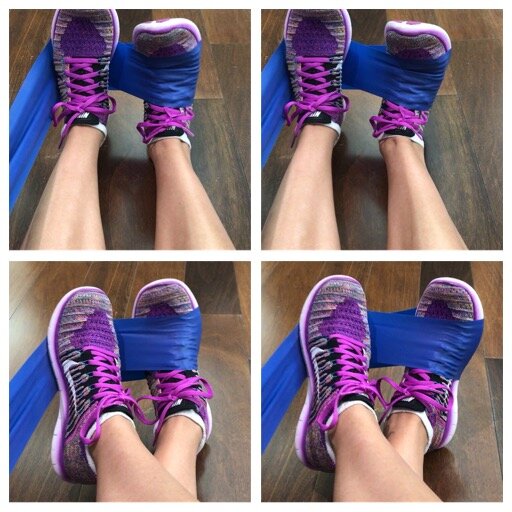Generally, exercise is known to be a beneficial component to a healthy body. Most people begin an exercise program for the sake of losing weight, which is then coupled with lowering calories and restricting certain types of food. Over time, the weight comes off, you feel more energized, and the benefits of these changes are recognized. Hopefully for the most part these lifestyle habits continue in order to maintain the healthy bodyweight. In the world of sports many athletes, especially women, exercise and diet intensively in hopes to enhance their performance. When it does, the notion is to continue the intense regimen. Little do these athletes know that the long-term effects of these habits become risky, particularly in the female population.
The Female Athlete Triad is a syndrome consisting of three symptoms: energy deficiency, menstrual irregularity, and bone loss. It is significantly common in the running population but can be found in many other sports. Most of these symptoms are ignored initially due to the fact that one is able to perform just fine. The majority will pay attention once an injury occurs. The syndrome usually begins with the intent to lose weight in order to improve performance. For runners, it is the same concept as wearing lighter running shoes—a lower bodyweight versus being overweight generally helps you run faster since your joints have less to carry. Once an athlete realizes the weight loss assists their faster paces, they want to continue getting lighter.
This pattern of dieting and intensively exercising is the beginning of the Female Athlete Triad. This eventually leads to developing eating disorders, menstrual problems and low bone mineral density, yielding a high risk of fractures. For women who were already at a low weight to begin with, the resulting outcomes are expedited. Of course, the end result of a devastating fracture is not something an athlete is seeking by adopting these habits, but in many cases it is inevitable. Although difficult to diagnose early on, this condition is most definitely preventable. The key is to be educated on and aware of the symptoms and what a true healthy body means.
Energy Deficiency
The first and most common symptom of the Female Athlete Triad is energy deficiency. Originally the term used was disordered eating, but over the years, energy deficiency seemed more appropriate because extreme weight loss and poor diet compared to the extreme exercise can exist without an eating disorder in the picture. Younger females already have the pressure these days to be thin, and when sports come into play, the emphasis is much greater. As mentioned earlier, being thinner, rather than overweight, may yield faster finish times for runners. Coaches, teammates, and parents sometimes play a role in the encouragement of “being thin to win”. This along with society’s reinforcement of the beauty of thinness is what eventually leads to eating disorders in young girls.
Anorexia and bulimia are the most common eating disorders among women and are fast and true ways to lose weight. By no means, are these weight loss options anywhere near healthy, though. Restricting calories by extreme dieting and excessive exercise are symptoms that fall into the categories of anorexia and bulimia. The extreme diet will only lead to lack of nutrients, as well as fluid and electrolyte imbalances, that will eventually leave the athlete with very low energy, poor strength and endurance, impaired reaction times, and risk of injury. Initially these outcomes go unnoticed and the athlete is attracted to the improved performance in her sport. The negative outcomes will then arise once there is a significant amount of weight lost.
Menstrual Disorders
Following the poor diet and exercise habits mentioned arises the next component of the Female Athlete Triad. Excessive exercise and calorie restriction leads to extremely low levels of estrogen. Research shows that women in good health who train for marathons can lower their estrogen levels by over 50%. Given this data, it is clear that athletes who are at an unhealthy bodyweight with significantly poor eating habits and incorporate a high level of training, most definitely lower estrogen levels by a much greater amount.
Estrogen is responsible for the growth of reproductive organs, regulation of the menstrual cycle, and the protection of bones. Normally the body will compensate for a large calorie restriction by lowering metabolism in order to maintain body weight. The loss of the menstrual cycle, or amenorrhea, is a sign that the body is in an energy deficient state. Although amenorrhea as part of the Female Athlete Triad is brought about by energy deficiency, it is also linked to low body fat percentage, nutrient imbalances, and physical and mental stress.
Bone Loss
Poor diet and the loss of estrogen are the leading cause of low levels of bone mineral density. Exercise, mostly weight-bearing, is known to be beneficial to bone health. Therefore running should be a healthy sport for the bones. Several studies on the bone health of female athletes have been conducted and the majority conclude that the bone loss occurs in the cases where there are menstrual irregularity, particularly women with amenorrhea. One study even showed that these intense athletes have bone mineral densities comparable to women in their 80s! This low bone density puts females at an extremely high risk of fractures. Stress fractures are in fact more common in athletes who present with menstrual irregularities, due to low estrogen levels.
The cases who eventually gain weight to a healthier point, resume regular menstrual cycles, and get back to a healthy diet for their training improve their bone density levels. Research has indicated that if the negative symptoms of the Female Athlete Triad are not addressed early on there is a chance that some of the resulting bone loss is irreversible. It is crucial to be aware of this condition and the early signs including extreme dieting and excessive training for the means of dropping weight for performance. Although initially an athlete may perform better, the excessive training is not realistic for the long term and will only lead to burnout and injury among other medical problems.
Steps to getting back the much needed energy, a regular menses, and strong bones start with lowering mileage and intensity, adding more calories to your diet, and regularly following up with your doctor, preferably one specialized in sports. It may seem scary to lower your running load and eat more, but taking these steps gradually can assure you get to and maintain a healthy weight and not alter your performance gains.













